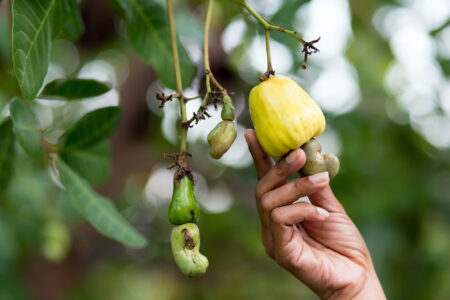- Tanzania will start purchasing gold through the Bank of Tanzania (BoT) with a view to establishing a National Gold Reserve.
- This initiative will significantly drive gold mining activities across the nation.
- Tanzania exports gold mainly to South Africa, India, and Switzerland
A plan to re-stablish Tanzania’s gold reserves is promising to hand a lifeline to thousands of small-scale gold miners in Tanzania’s mining industry.
Tanzania has several significant gold mining projects and operations, offering job opportunities to thousands of people. At the moment, Tanzania is one of the top producers of gold across Africa. Consider the Mwakitolwo gold mine in Shinyanga, which employs over 10,000 people despite using an artisanal approach.
Mines to build Tanzania gold reserves
Numerous large-scale gold mines are present in Tanzania and are run by both local and international mining firms. Some of the leading gold mines are Geita Gold, Bulyanhulu, North Mara and Golden Pride.
Geita Gold Mine, owned by AngloGold Ashanti, is the biggest gold mine in Tanzania and has been operating since 2000. In 2020, Geita, which is in the Geita Region, produced more than 500,000 ounces of gold. The mine has proved gold reserves of about 14.7 million ounces.
Further, the underground mine Bulyanhulu is situated in the Shinyanga region is run by Barrick Gold Corporation. It has substantial gold deposits and has been in operation since 2001. North Mara is an open-pit gold mine in the Mara region that is also run by Barrick Gold Corporation. It is one of the Lake Victoria Goldfields’ three mines.
Tanzania has a thriving artisanal and small-scale mining sector in addition to large-scale mining. Artisanal and small-scale mining presents challenges related to environmental sustainability and formalization of the trade.
“We would like to see the government increase the price of gold we sell to cater for our livelihood,” said Yohana Mwakusya, a small-scale miner in Mbeya (Chunya) region, another gold rush hotspot in Tanzania.
Purchasing gold through Bank of Tanzania
To boost revenues and create jobs for thousands of artisanal miners, the government has increased its engagement in the gold mining industry and strengthened regulations. Already the Tanzania is adopting measures to ensure transparency, boost revenue collection, and encourage local mineral beneficiation.
The East African country has established processes for purchasing gold through the Bank of Tanzania (BoT) with a view to establishing the National Gold Reserve. This initiative anticipated to drive gold mining activities across the nation.
This establishment of a National Gold Reserve was announced by Tanzania’s Finance Minister, Dr. Mwigulu Nchemba, as he presented the country’s budget for the fiscal year 2023–2024.
The finance minister emphasised that the government is reviewing laws, regulations, and administrative tax procedures to ensure that the gold extracted in the country is purified before exportation.
Dr. Nchemba highlighted the completion of the construction of gold refinery plants within the country and the government’s initiatives to provide incentives to ensure the availability of sufficient raw materials.
A national gold reserve
“The government has reduced royalties for minerals sold in refinery plants from six percent to four percent,” he said. Dr Nchemba asserted that establishing the national gold reserve would offer competitive prices to local miners and strengthen Tanzania’s currency.
Establishing a National Gold Reserve is not a new initiative in Tanzania. Since 1990, the central bank has held a gold reserve, but this practice ended in 2002.
However, on June 13, 2021, when President Samia Suluhu Hassan was launching a gold refinery in Mwanza, she hinted that the refinery would enable the central bank to start buying gold in line with the law, thereby building a gold reserve.
Read also: Mining in Tanzania: Barrick sees Tanzania partnership expansion
According to GlobalData, Tanzania is the world’s 22nd largest producer of gold, with an output of 1,347koz in 2022, down by 8.11 percent in 2021. On the regional scale, Tanzania is Africa’s fourth largest gold producer after South Africa, Ghana, and Mali. It accounts for 1.3 percent of the total global gold output.
Gold revenues in Tanzania
“Tanzania’s gold reserves are estimated at 45 million ounces, and Tanzania’s gold production stands at around 50t per year,” according to TanzaniaInvest.
More importantly, the recent trend of exports is showing signs of slugging. Tanzania’s gold exports reached $2.743 billion in December 2021, compared to $2.957 billion in 2020 and $2.215 billion in 2019.
Gold accounted for 89.85 percent of all mineral revenues of Tanzania in the financial year 2020/21. Tanzania exports gold mainly to South Africa, India, and Switzerland.
The biggest contributor to the gold production in Tanzania in the financial year 2019/20 was Geita Gold Mining, which accounted for 43 percent. North Mara Gold Mine with 21 percent, and Buzwagi Gold Mine at 10 percent followed closely. Shanta Mining Company accounted for 6 percent Bulyanhulu Gold Mine (3 percent), and Stamigold-Biharamulo Gold Mines at 1 percent.
Refining gold into international standards
Entities in Tanzania’s public and private sectors are driving initiatives to expand the sector. For instance, state mining corporation (Stamico) is enabling the establishment of refining gold to international standards. Stamico has been urging the central bank to start buying refined gold as part of growing foreign reserves.
According to Tanzania Invest, three gold smelters are operating in Tanzania. Mwanza Precious Metal Refinery (MMPR), Arusha Gold Smelter (AGS) and Morogoro Gold Smelter (MGS).
The Tanzanian government has also awarded licenses for constructing two more gold refineries to Chinese companies. However, Ministry of Minerals shows that large and medium-scale miners accounted for 71 per cent of 53,795.86 tonnes of gold produced in 2019/2020.
Under Covid-19, investors turned to gold
As of March 2021, minerals contributed 45.9 percent of the value of all exports, bringing in $3.103 billion, with gold contributing 90 percent of the exports.
The COVID-19 pandemic disrupted financial markets, and investors rushed for gold which they considered a haven asset. The latter brought several consequences across the line, including massive gold exports, which outmatched tourism in 2021.
The BoT pointed out that Tanzania’s gold shipment hit the $3 billion mark for the first time following improving global prices. The value of the exports of gold to $3.025 billion in the year ending March 31, 2021. In the previous year, Tanzania realized $2.324 billion in gold earnings.
In April, the Minister of Minerals, Doto Biteko, argued that the government of Tanzania, via BoT, is preparing to furnish its national grid reserve by procuring gold.
“The Central Bank has informed the Mining and Energy Committee that the regulation for gold purchases is ready”, Biteko commented. Overall, Tanzania’s ambition to establish its gold reserve presents an important stride to effectively utilising minerals and expanding gold mining potential.











